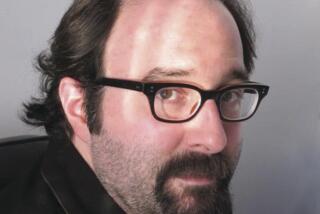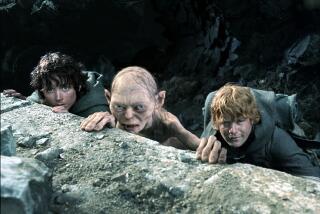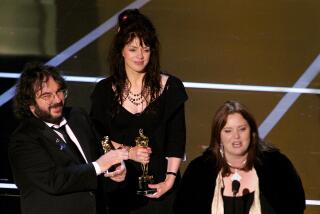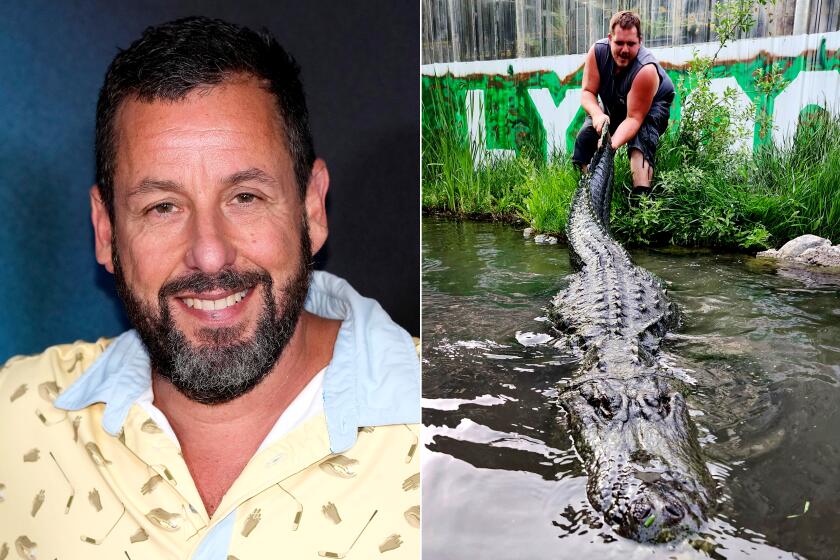Lord of the First ‘Ring’
- Share via
Amid all the Oscar buzz surrounding Peter Jackson’s blockbuster adaptation of J.R.R. Tolkien’s “The Lord of the Rings: The Fellowship of the Ring,” one fact has gone largely unnoticed: The film that has garnered 13 Academy Award nominations has also joined “Cleopatra” (1963), “Romeo and Juliet” (1968) and “Heaven Can Wait” (1978) in the tiny category of best picture nominees that are new versions of earlier films.
Granted, the term “remake” has rarely shown up in the list of words used to describe Jackson’s first installment in the Middle-earth ring cycle. But the first film version of Tolkien’s epic was the 1978 animated adaptation, “The Lord of the Rings,” scripted by Tolkien scholar Chris Conkling and fantasy author Peter S. Beagle and directed by Ralph Bakshi.
That version was also the first one to be produced under a grueling 11/2-year shooting schedule, the first that was designed to break the Ring trilogy into multiple films and, in a sense, the first attempt at filming Tolkien in live action.
“I shot the entire film live, fully costumed,” says Bakshi, who is best known for the groundbreaking and controversial 1970s animated features “Fritz the Cat,” “Heavy Traffic” and “Coonskin” and for “Cool World” (1992). “I was trying to get a hybrid form that was not quite animation, not quite live, with a story that was so realistic.”
The director spent six months filming the live action on two continents. Bakshi recorded the voice track in England with a cast of British performers that included John Hurt, Andre Morrell and Anthony Daniels (“Star Wars’” C3PO) and played it back while a new group of actors, many of them “little people,” acted the scenes against a white cyclorama on a sound stage.
For the battle sequences, Bakshi shot on location in Spain with a small army of equestrian stuntmen in grotesque Orc makeup, filming at the same castle that had been used in “El Cid” (1961). In the process, he also managed to outrage the Spanish film lab technicians developing the rushes, who did not understand that the cars, equipment and airplanes that regularly showed up in the period footage would be eliminated in the transfer to animation.
“They wanted me fired!” Bakshi says. “As far as they were concerned, it was a live-action picture, but there were telephone poles and shots where one camera picked up the other camera dollying behind the horses. I didn’t care because I was going to white them out, but they sent their entire executive staff [to the set] and told the producer I was out of my ... mind!”
After the live footage was shot, Bakshi spent a year on the animation process. For the lead characters, Bakshi’s animators (who included veteran studio cartoonists Irv Spence and Manny Perez), used a Rotoscope on the live action, drawing over the top of the live actors’ performances. So in a sense, the character of Sam Gamgee was “played” in the film by 3-foot-9-inch actor Billy Barty, whose distinctive mannerisms and facial expressions are recognizable through the animation, and Frodo Baggins was played by former Mouseketeer Sharon Baird. “My Frodo was a little girl,” Bakshi says. “I wanted the Hobbits to be asexual, because that’s obviously how Tolkien wrote them.”
(Using live action as a basis for animation was not really new, however; it goes back to “Snow White and the Seven Dwarfs” (1937) and is still employed today.)
The more fantastical creatures, such as Gollum, were animated from scratch. For the nightmarish Ringwraiths and Orcs, the live-action frames were transferred directly onto cels and painted. Not only did this create a more realistic, if surreal, effect, in the pre-digital era it was the only way to effectively animate a battle.
Bakshi laments that he had only four weeks to edit the film, which was rushed to meet a Christmas release date. But even more, he regrets the elimination of two small but all-telling words from the title. “The contract I signed with United Artists and the producer read ‘Lord of the Rings, Part 1,’ because I thought audiences should know they were coming in to see an incomplete movie,” he says.
The 2-hour, 11-minute film covered all of Book One and part of Book Two, but without any indication that the story would continue, critics complained that the ending was jarringly abrupt. (The new version has defused this problem by making clear that the full story has been filmed as a trilogy.)
What happened to Part 2? Bakshi, who says he “nearly died” trying to shoot the film first in live action, then in animation, on an 18-month schedule and a budget of $12 million, declined to continue when he was offered only half as much to do the rest.
“The Lord of the Rings” opened in November 1978 to mixed reviews and went on to earn an estimated $27 million domestically. Though some praised the film for its graphic imagery, many fans of the books felt the story had been too simplified, and some animation buffs were disturbed by use of the Rotoscope.
The debate it sparked continues even now on the Internet, with some Tolkien fans criticizing everything from the characters’ word pronunciations to their hairstyles, while others line up to buy production cels. (Charles Champlin, The Times’ former arts editor, “found the film a very long, very loud disappointment, singularly lacking the magical charm Tolkien’s readers obviously find in the books.”)
Now 63 and working as a painter and animation teacher in New York while completing an independent film, Bakshi still gets winded just thinking about the ordeal. “I should have stopped and said, ‘Look, guys, I need another year.’ It was really too much to ask one man to do it in a year and a half.”
How much influence did Bakshi’s version have on Jackson’s much longer, costlier, more meticulous adaptation? Officially, none. Bakshi, who confesses he hasn’t seen Jackson’s film, says friends in Hollywood have told him that the new production team repeatedly screened and studied his version.
Whether intentional or not, one sequence in Jackson’s film, in which Frodo and his companions hide in the woods from a Ringwraith, is strikingly similar to Bakshi’s version.
Bakshi is content with the thousands of e-mails he says he has received that “pretty much break out in my favor” regarding fidelity to the book.
“I’m afraid to look at the new picture because it may bust that bubble,” he adds with a chuckle, “but right now I’m very happy with the kind of responses I’m getting from fans.”
More to Read
Only good movies
Get the Indie Focus newsletter, Mark Olsen's weekly guide to the world of cinema.
You may occasionally receive promotional content from the Los Angeles Times.









